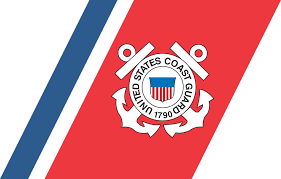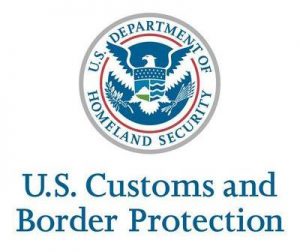|
Reminder
All self-propelled ocean going vessels over 500 Gross Tons, all oceangoing barges, and their supporting tugs below the Huey P. Long Bridge at MM 106 above Head of Passes (AHP) on the Lower Mississippi River (LMR) are required to report their intentions to depart or remain in port in accordance with the MHCPP prior to 2200 local time, September 3, 2018.
ACTIONS FOR VESSELS
1. Inform the Vessel Traffic Service one of the following:
The vessel is remaining in port; or
The vessel is departing port.
2. Vessels planning to remain in port shall complete the Remain In Port Checklist (RIPC) and submit the RIPC Reporting Tool.
Vessels are not required to submit additional mooring plans.
Vessels should report their intentions and/or submit the completed RIPC Report to the Vessel Traffic Service at:
Fax (504) 365-2519, or
For the Remaining in Port Reporting Tool for Ocean Going Vessels —> (Click here) SUBMIT FIRST PAGE ONLY IF VESSEL IS REMAINING IN PORT
For the Remaining In Port Reporting Tool for Ocean Going Barges and Supporting Tugs —> (Click here) SUBMIT FIRST PAGE ONLY IF VESSEL IS REMAINING IN PORT
Additional information is listed in the full MSIB below.
|
Set Port Condition YANKEE
At 16:30 p.m. local time, September 3, 2018, due to Gale force winds predicted at Southwest Pass within 24 hours, the Captain of the Port (COTP), Sector New Orleans set Port Condition YANKEE in accordance with the Maritime Hurricane Contingency Port Plan (MHCPP).
As a reminder, all self-propelled ocean going vessels over 500 Gross Tons, all oceangoing barges, and their supporting tugs below the Huey P. Long Bridge at Mile Marker (MM) 106 above Head of Passes (AHP) on the Lower Mississippi River (LMR) are required to submit a Remaining In Port Checklist (RIPC) in accordance with the MHCPP. This is due by 10:00 p.m. local time, September 3, 2018.
Vessels are required to submit the RIPC reporting tool found in Enclosure 2 of the MHCPP. Vessels are only required to submit the first page of the RIPC reporting tool found in Enclosure 2 of the MHCPP. Vessels are not required to submit additional mooring plans.
Upon completion of the RIPC, fax or e-mail the reporting tool to the Vessel Traffic Service at (504) 365-2519 or e-mail to: D08-PF-VTSNEWORLEANS-LMR@USCG.MIL
Depending upon storm path and off-shore conditions, the Associated Bar Pilots and Federal Pilots will cease boarding vessels before it becomes unsafe to do so.
Barge fleets below MM 73 AHP should provide an accurate barge count to Sector New Orleans Facilities Compliance Branch via e-mail (facilitiesnola@uscg.mil) by 4:30 p.m. on September 4, 2018.
Vessel owners and operators are reminded of the Memorandum of Understanding (MOU) that went into effect October 2014 pertaining to vessels and barges located below MM 73 AHP, LMR. At this time, the Coast Guard does not intend to implement the safety zone for river evacuation below MM 73. However, these requirements will be discussed on our daily Port Coordination Team conference calls and reassessed as needed.
- Secure missile hazards and clear nonessential equipment and loose gear.
- Secure/remove hazardous materials or cargos to a safe location, especially drums.
- Oil transfer terminals not engaged in transfer operations should drain all loading arms and hoses of product, blank off hoses, and empty/clean small discharge containment.
- Mooring lines doubled up with due consideration given to the effects of predicted storm surge.
- If moored, outboard anchor rigged at a short stay.
- Ensure sufficient number of officers and crew onboard to tend mooring lines, and/or get underway.
- Vessel ballasted to ensure maximum safety.
- All side ports, hatches, portholes, and other openings are closed and secured.
- All firefighting equipment is ready for immediate use.
- A continuous radio watch maintained on Channel 16 and 67 VHF-FM.
- If at anchorage, at least two anchors set, if equipped with two anchors.
- If at anchorage, vessels should remain ready to get underway within 15 minutes.
- Spare mooring lines and/or wires should be readily available.
- Facility storage tanks should be pressed up or empty (it is preferred to have empty and/or pressed up tanks vice multiple tanks partially full).
- Styrene and other similar product-producing facilities should take additional precautionary measure.
Ports and mariners are cautioned that the COTP New Orleans may quickly set Port Condition Zulu and/or implement further conditions as the situation develops. Any changes to port conditions will be relayed to the maritime community through MSIBs.
You may review the MHCPP, referenced above, online at https://homeport.uscg.mil/port-directory/new-orleans
For additional information, contact the following:
Waterways Management: (504) 365-2280 Email address: SecNOLA-WPM@uscg.mil
Sector New Orleans Command Center (24 hour): (504) 365-2200
Vessel Traffic Center (24 Hour): (504) 365-2230 or VHF-FM channels 67 or 12
Coast Guard District Eight Bridges: (504) 671-2128
National Response Center (24 Hour): 1-800-424-8802



